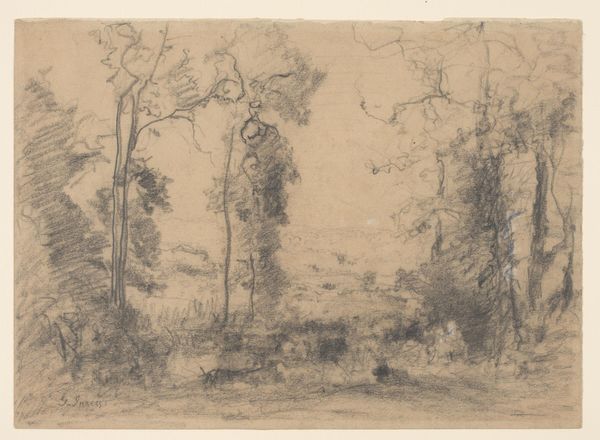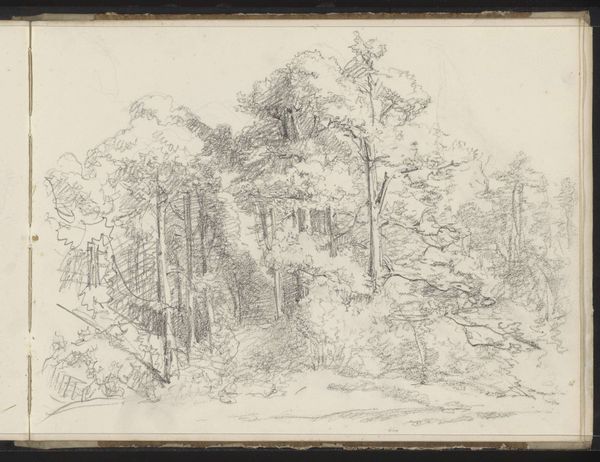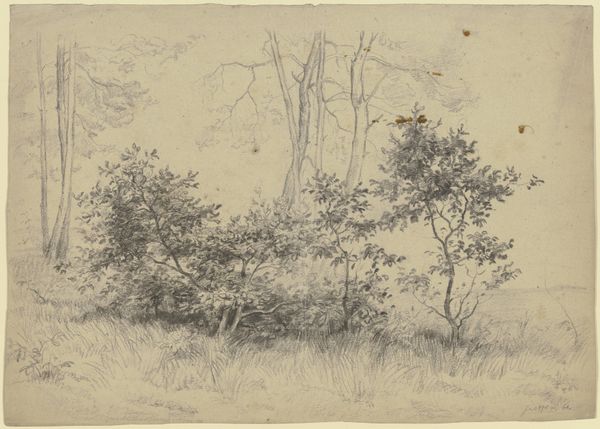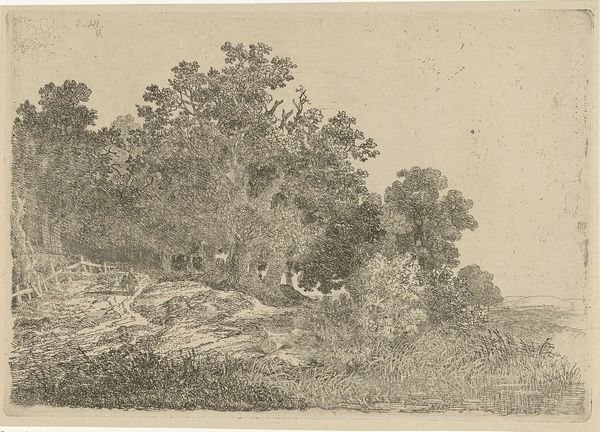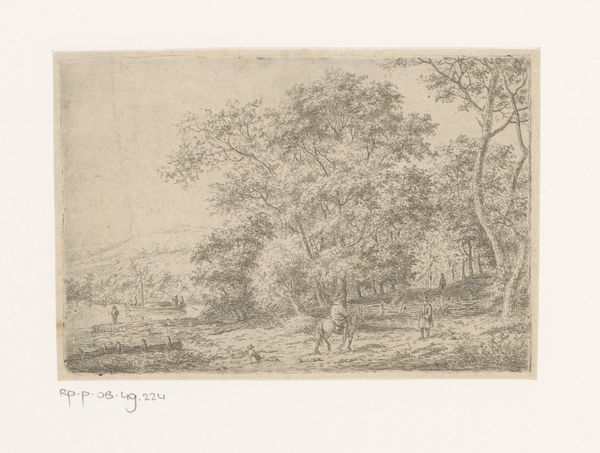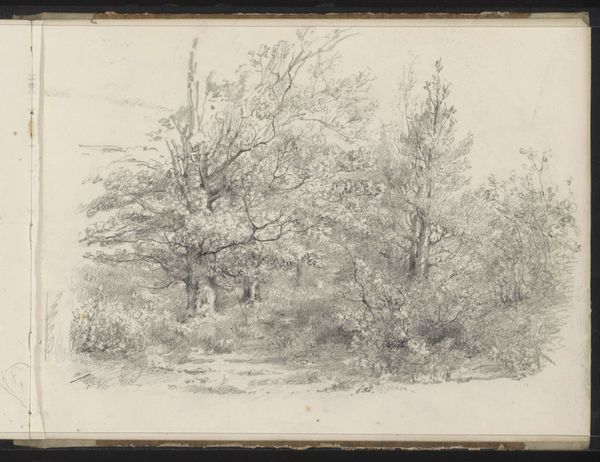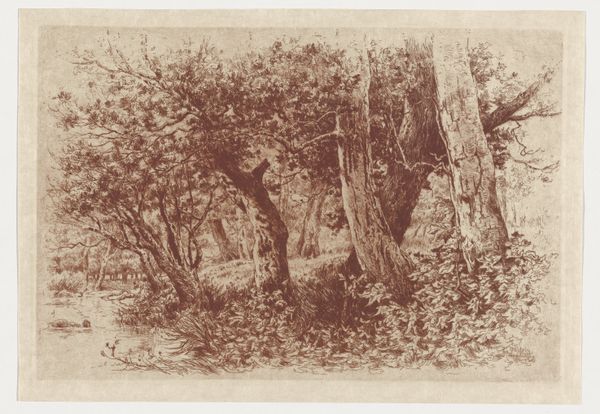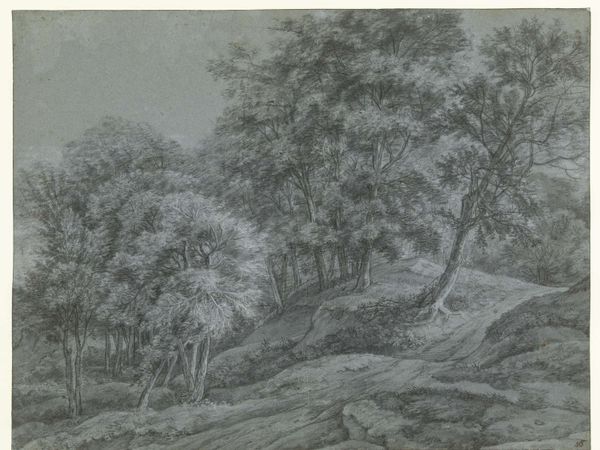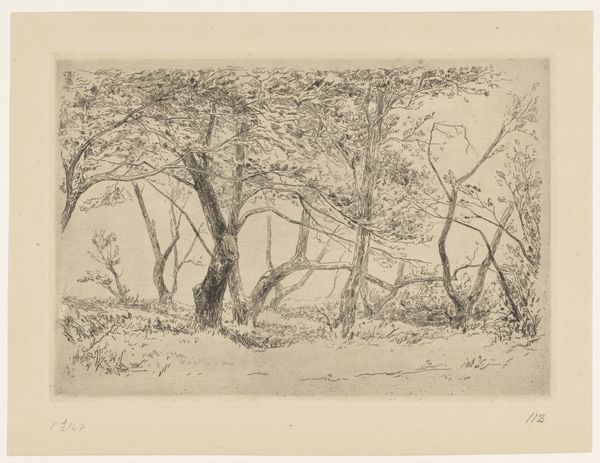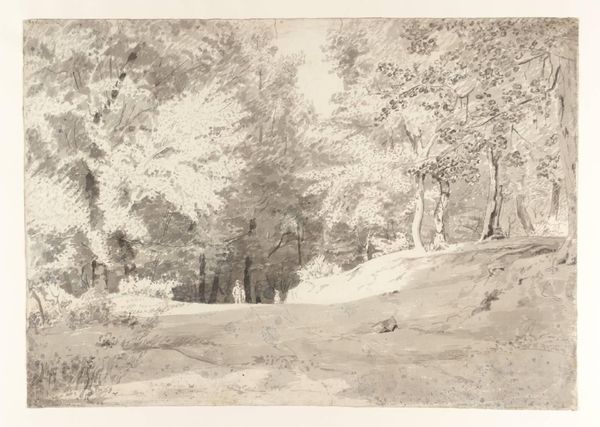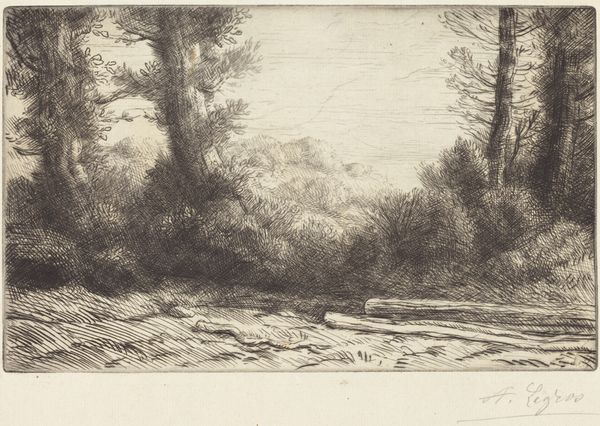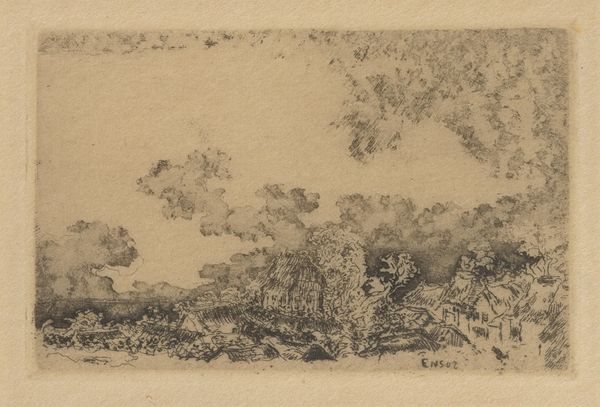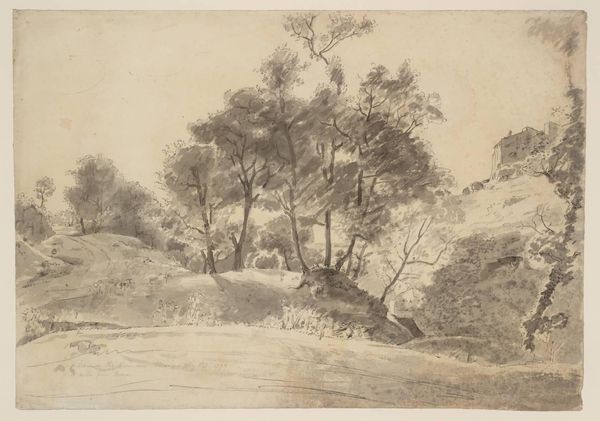
Dimensions: support: 381 x 542 mm
Copyright: CC-BY-NC-ND 4.0 DEED, Photo: Tate
Editor: This is John Downman's "In the Wood near Albano," created sometime in the late 18th or early 19th century. It's a lovely landscape, but the composition feels almost theatrical. What do you see in the artist's use of light and shadow? Curator: Observe how Downman articulates space through tonal gradations. The strategic placement of darker masses against the lighter sky creates a balanced asymmetry. Consider the formal relationship between the framing trees and the distant vista. Editor: It's like he's using the trees as a proscenium! Does that intentional framing change our reading of the landscape itself? Curator: Precisely. It invites a reading not merely as nature, but as constructed, mediated. The artist’s orchestration of form transforms nature into an aesthetic object. Editor: Interesting, I wouldn't have picked up on that without your insight! Curator: Examining art through its formal elements allows us to decode intended and unintended meanings.
